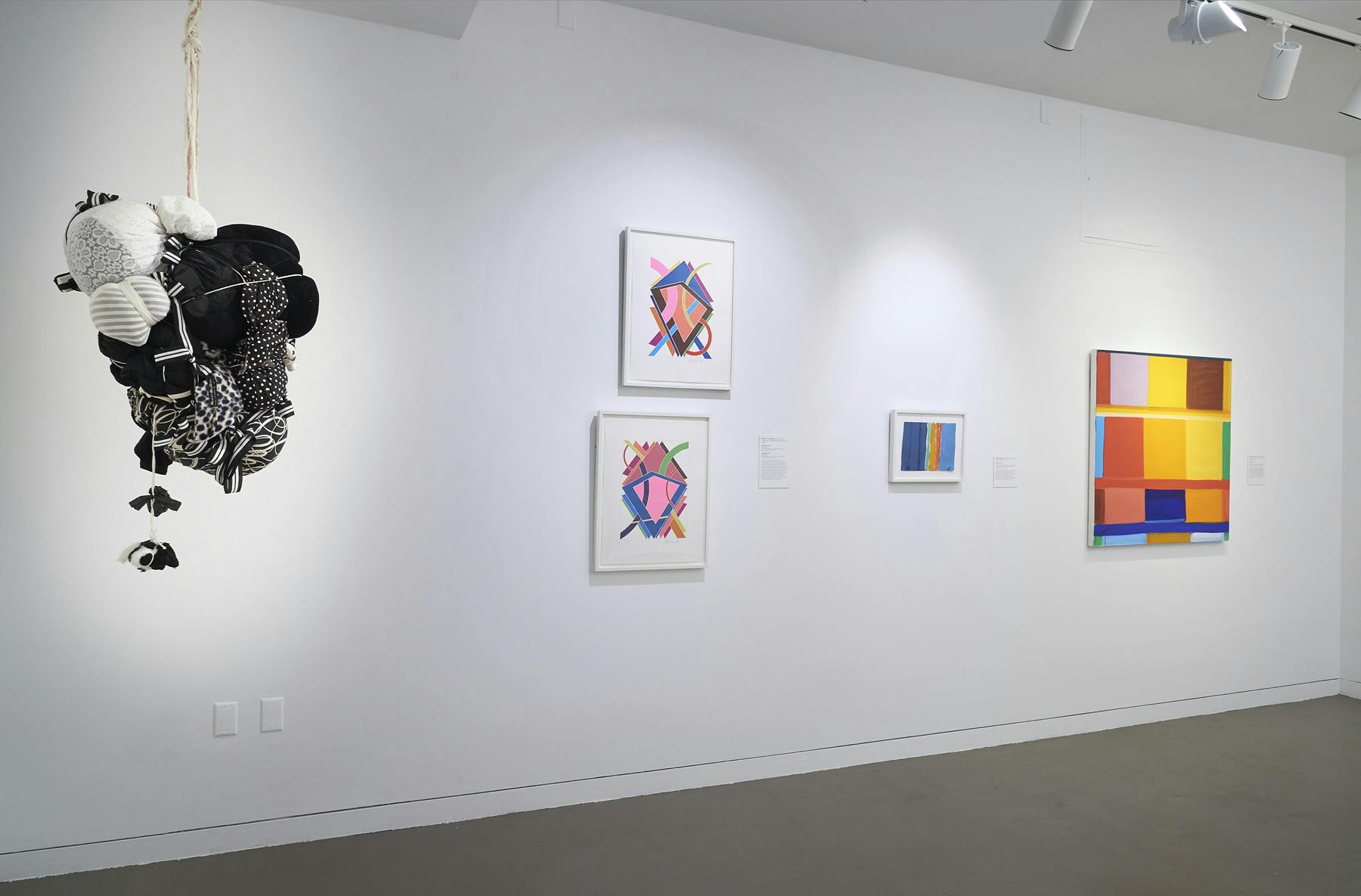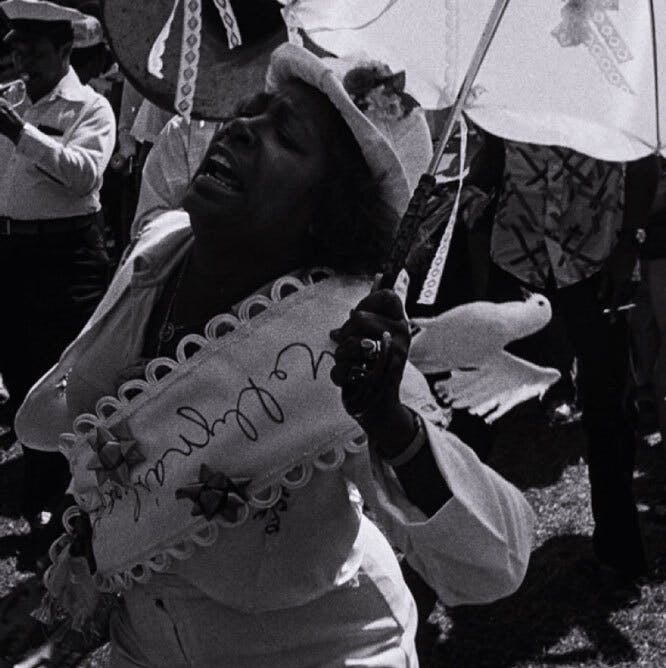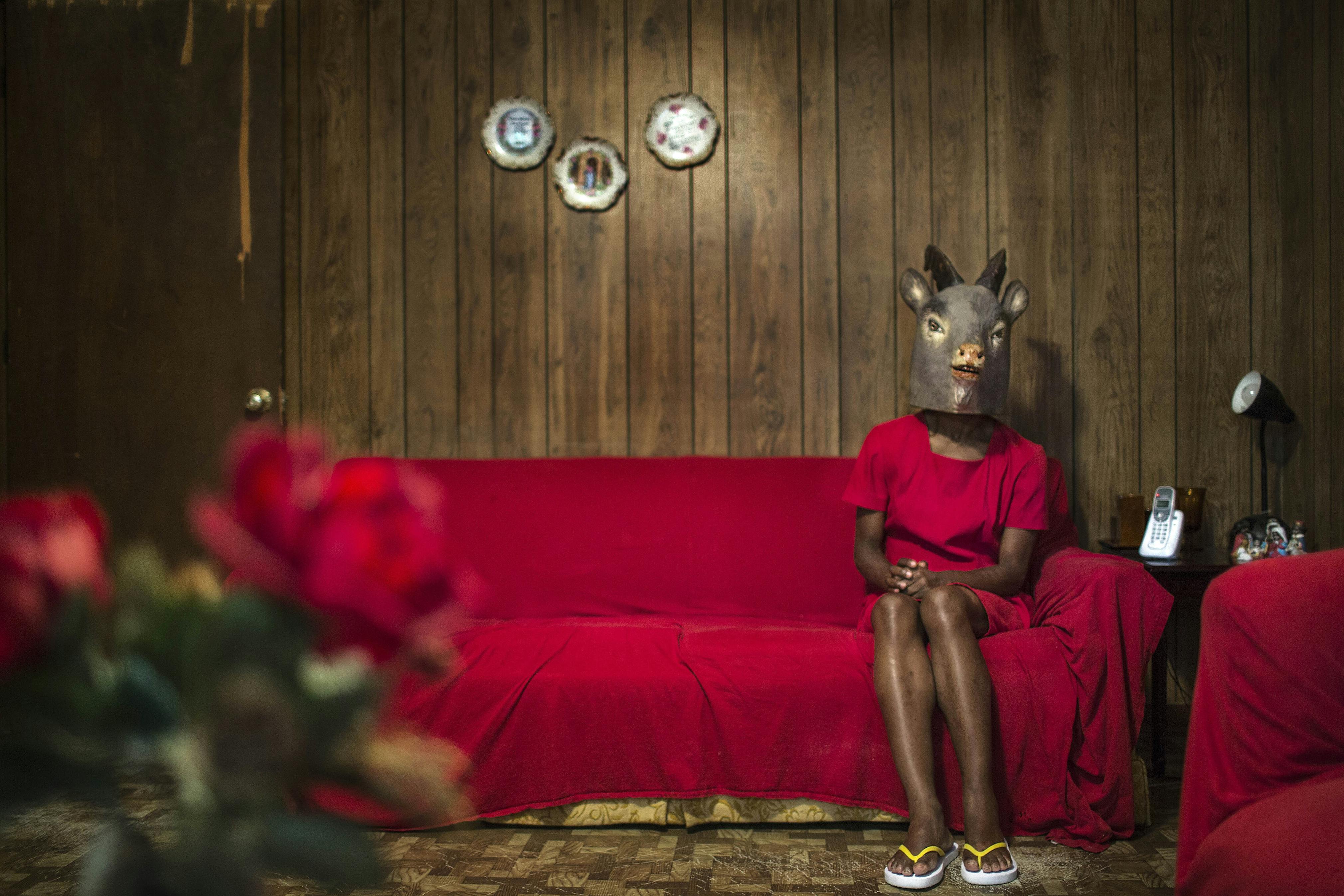McArthur Binion
(b. 1946)McArthur Binion's canvases appear as minimalist abstractions but upon closer observation reveal details of the artist’s personal history.
Biography
During McArthur Binion’s childhood, his family shifted from working as tenant farmers in rural Mississippi to factory workers in industrial Detroit. As a student at Detroit’s Wayne State University, he began as a creative writing major. He worked at the school’s literary review, which published both writing and visual art, the confluence of which remains a visible influence in Binion’s practice. At twenty-two, he traveled to Europe, where he discovered his passion for art in a drawing class. After that, he drew every day for two years. As Binion states, this introduction offered him a great deal of freedom as he explored and defined his practice: “I didn’t come from art history; I landed there. I was able to really invent pretty early in my career.”1 His practice continues to be influenced by his upbringing in both rural and urban environments, as well as the convergence of writing, visual art, and music.
After finishing graduate school, in 1973 Binion moved to New York. There, he socialized with artists including Stanley Whitney, Jack Whitten, and Jean-Michel Basquiat. He was affiliated with a group of Black painters (including Whitney and Whitten) who worked in abstraction despite the expectation for artists of color to explicitly reference and address issues of race and identity. Binion was interested in expanding abstraction beyond the methods and definitions prevalent in art criticism at the time. He introduced recognizable imagery and documentation—such as photographs of his childhood home, photocopies of his birth certificate, and pages from his address book. Thus, from a distance, his canvases appear as minimalist abstractions but upon closer observation reveal details of the artist’s personal history. Binion names Piet Mondrian, Wilfredo Lam, and Mark Rothko as influences on and antecedents to his work. He moved to Chicago in 1991, and, from 1992 until 2015, taught art at Columbia College.
Binion earned his BFA from Wayne State University and MFA from Cranbrook Academy of Art. His work is in the collections of numerous institutions, including the National Museum of African American History and Culture, the Guggenheim Museum, and the Whitney Museum of American Art.
Exhibitions and Events
McArthur Binion
(b. 1946)McArthur Binion's canvases appear as minimalist abstractions but upon closer observation reveal details of the artist’s personal history.
History of Application: Talking to You, 1977
Biography
During McArthur Binion’s childhood, his family shifted from working as tenant farmers in rural Mississippi to factory workers in industrial Detroit. As a student at Detroit’s Wayne State University, he began as a creative writing major. He worked at the school’s literary review, which published both writing and visual art, the confluence of which remains a visible influence in Binion’s practice. At twenty-two, he traveled to Europe, where he discovered his passion for art in a drawing class. After that, he drew every day for two years. As Binion states, this introduction offered him a great deal of freedom as he explored and defined his practice: “I didn’t come from art history; I landed there. I was able to really invent pretty early in my career.”1 His practice continues to be influenced by his upbringing in both rural and urban environments, as well as the convergence of writing, visual art, and music.
After finishing graduate school, in 1973 Binion moved to New York. There, he socialized with artists including Stanley Whitney, Jack Whitten, and Jean-Michel Basquiat. He was affiliated with a group of Black painters (including Whitney and Whitten) who worked in abstraction despite the expectation for artists of color to explicitly reference and address issues of race and identity. Binion was interested in expanding abstraction beyond the methods and definitions prevalent in art criticism at the time. He introduced recognizable imagery and documentation—such as photographs of his childhood home, photocopies of his birth certificate, and pages from his address book. Thus, from a distance, his canvases appear as minimalist abstractions but upon closer observation reveal details of the artist’s personal history. Binion names Piet Mondrian, Wilfredo Lam, and Mark Rothko as influences on and antecedents to his work. He moved to Chicago in 1991, and, from 1992 until 2015, taught art at Columbia College.
Binion earned his BFA from Wayne State University and MFA from Cranbrook Academy of Art. His work is in the collections of numerous institutions, including the National Museum of African American History and Culture, the Guggenheim Museum, and the Whitney Museum of American Art.



